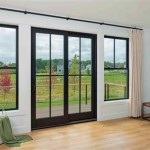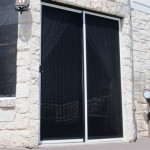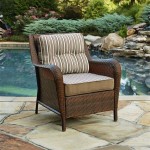Patio Storage Benches: Combining Seating and Storage for Outdoor Living
Patio storage benches represent a practical and aesthetically pleasing solution for enhancing outdoor living spaces. These versatile pieces of furniture serve a dual purpose, providing comfortable seating while simultaneously offering concealed storage for a variety of items. This combination makes them particularly valuable for individuals seeking to maximize space and organization in their patios, decks, gardens, or balconies.
The functionality of patio storage benches extends beyond mere convenience. They contribute to a more organized and visually appealing outdoor environment by eliminating clutter and providing a designated space for items that would otherwise be scattered or exposed to the elements. This contributes to a safer and more enjoyable outdoor experience.
The market for patio storage benches encompasses a wide range of materials, styles, and sizes, catering to diverse aesthetic preferences and functional needs. Understanding the nuances of these variations is crucial for selecting a bench that effectively complements the existing outdoor decor and fulfills its intended purpose.
Materials and Durability Considerations
The choice of material significantly impacts the durability, maintenance requirements, and overall aesthetic of a patio storage bench. Common materials include wood, plastic/resin, and metal, each possessing distinct advantages and disadvantages.
Wood: Wooden benches, particularly those constructed from weather-resistant species like teak, cedar, or redwood, offer a classic and natural aesthetic. These woods contain natural oils that repel insects and resist moisture damage, contributing to their longevity in outdoor environments. However, wooden benches typically require periodic maintenance, such as staining or sealing, to preserve their appearance and protect them from the elements. Without proper care, wood can be susceptible to warping, cracking, or rotting.
Plastic/Resin: Plastic or resin storage benches are known for their durability, affordability, and low maintenance requirements. These materials are resistant to moisture, insects, and fading, making them well-suited for harsh weather conditions. They are also lightweight and easy to clean. While plastic benches may not possess the same aesthetic appeal as wooden benches, they are available in a variety of colors and styles, some even designed to mimic the look of wood. A key consideration with plastic is the quality of the material used, as some cheaper plastics can become brittle and crack over time, especially when exposed to prolonged sunlight.
Metal: Metal patio storage benches, often crafted from aluminum or steel, offer a contemporary and durable option. Aluminum is lightweight and rust-resistant, while steel provides superior strength and stability. Metal benches are typically finished with a powder coating to protect them from corrosion and fading. While metal benches require minimal maintenance, they can become hot to the touch in direct sunlight. Additionally, steel benches can be heavier and more difficult to move than benches made from other materials. Some metal benches may also be susceptible to rust if the protective coating is damaged.
In selecting a material, it is vital to consider the local climate, expected usage, and desired level of maintenance. For areas with frequent rainfall or extreme temperatures, plastic or metal benches may be more practical choices. For those prioritizing aesthetics and willing to invest in regular maintenance, wooden benches offer a timeless appeal.
Size and Storage Capacity
The size and storage capacity of a patio storage bench should be carefully considered based on the available space and intended storage needs. Benches are available in a range of sizes, from small benches suitable for balconies or narrow patios to large benches capable of seating multiple people and accommodating substantial storage volumes.
Before purchasing a bench, it is essential to measure the available space and determine the maximum dimensions that can be comfortably accommodated. Consider the bench's proximity to other furniture, walkways, and access points. A bench that is too large can overcrowd the space and impede movement, while a bench that is too small may not provide adequate seating or storage.
The storage capacity of a bench is typically measured in gallons or cubic feet. Determine the types of items that will be stored in the bench and estimate the required storage volume. Common items stored in patio benches include cushions, gardening tools, pool supplies, toys, and outdoor games. Consider the size and shape of these items when assessing storage capacity. It is generally advisable to choose a bench with slightly more storage capacity than initially anticipated to accommodate future needs.
The internal dimensions of the storage compartment are also important. Some benches have divided compartments or shelves, which can help organize items. Others have a single, open compartment, which may be more suitable for storing larger or irregularly shaped items. Additionally, consider the ease of access to the storage compartment. Benches with hinged lids or removable panels offer convenient access to stored items.
Ensure that the bench's construction allows for adequate ventilation to prevent the buildup of moisture and mildew inside the storage compartment. Some benches feature ventilation holes or slats to promote airflow. It is also advisable to store items in waterproof containers or bags to further protect them from moisture.
Style and Aesthetic Considerations
Patio storage benches are available in a wide array of styles and designs, ranging from traditional to contemporary. Selecting a bench that complements the existing outdoor decor and reflects personal aesthetic preferences is crucial for creating a cohesive and visually appealing outdoor space.
Consider the architectural style of the house and the overall design of the patio or deck. Traditional benches often feature classic designs, such as slatted backs, scrolled arms, and ornate details. These benches are typically made from wood and finished with a stain or paint that complements the house's exterior. Contemporary benches tend to have clean lines, minimalist designs, and neutral colors. These benches are often made from metal, plastic, or composite materials.
The color of the bench should also be carefully considered. Choose a color that complements the surrounding furniture, landscaping, and architectural features. Neutral colors, such as white, gray, and beige, are versatile and can blend seamlessly with a variety of outdoor settings. Bold colors can add a pop of visual interest and create a focal point. Consider the color of existing cushions and pillows when selecting a bench color.
The texture and finish of the bench can also contribute to its overall aesthetic appeal. Wooden benches can have a smooth or rough texture, depending on the type of wood and the finishing process. Metal benches can have a smooth or textured powder coating. Choose a texture and finish that is both visually appealing and comfortable to the touch.
Accessorize the bench with cushions and pillows to enhance its comfort and aesthetic appeal. Choose cushions and pillows that are made from weather-resistant materials and complement the bench's color and style. Add a throw blanket for added warmth and visual interest. Plants and other decorative items can also be placed around the bench to create a more inviting and personalized outdoor space.
Beyond these three major points, other considerations include:
Weight Capacity: Always verify the weight capacity of the bench before purchasing. Ensure that the bench can safely accommodate the intended users and any items that will be placed on it. Exceeding the weight capacity can damage the bench and pose a safety risk.
Assembly: Some benches require assembly, while others are pre-assembled. Consider the level of assembly required and whether you have the necessary tools and skills. If you are not comfortable assembling furniture, choose a bench that is pre-assembled or opt for professional assembly services.
Warranty: Check the warranty provided by the manufacturer. A longer warranty indicates greater confidence in the product's durability and quality. Read the warranty terms carefully to understand the coverage and any limitations.
Price: Patio storage benches are available at a wide range of price points. Set a budget and compare prices from different retailers before making a purchase. Consider the quality of the materials, construction, and features when evaluating the value of a bench.
Security Features: Some storage benches offer security features, such as lockable lids or tamper-resistant hinges. These features can provide added peace of mind, especially if valuable items will be stored in the bench.
By carefully considering these factors, individuals can select a patio storage bench that effectively combines seating, storage, and style, ultimately enhancing their outdoor living experience and contributing to a more organized and enjoyable outdoor environment. The integration of function and aesthetics is what makes patio storage benches a beneficial addition to any outdoor space.

11 Best Outdoor Storage Benches In 2024

How To Build A Diy Outdoor Storage Bench

Kingdely 51 Gal Brown Wood Outdoor Storage Bench Deck Box Entryway Garden Loveseat Waterproof Seating Wfkf170153 01 The Home Depot

10 Easy Pieces Outdoor Storage Benches Gardenista

Outdoor Storage Bench Diy Backyard Box With Our Handcrafted Life

How To Build A Diy Outdoor Storage Bench

Wing Wicker Patio Storage Bench Multi Brown Christopher Knight Home Target

Kingdely Dark Brown Wood Outdoor Patio Garden Storage Bench With Back Function Cup Holder Waterproof Wfkf170274 01 Cc The Home Depot

Keter 2 Seater Carty Patio Storage Bench Temple Webster

How To Build An Outdoor Storage Bench For Your Patio
Related Posts








